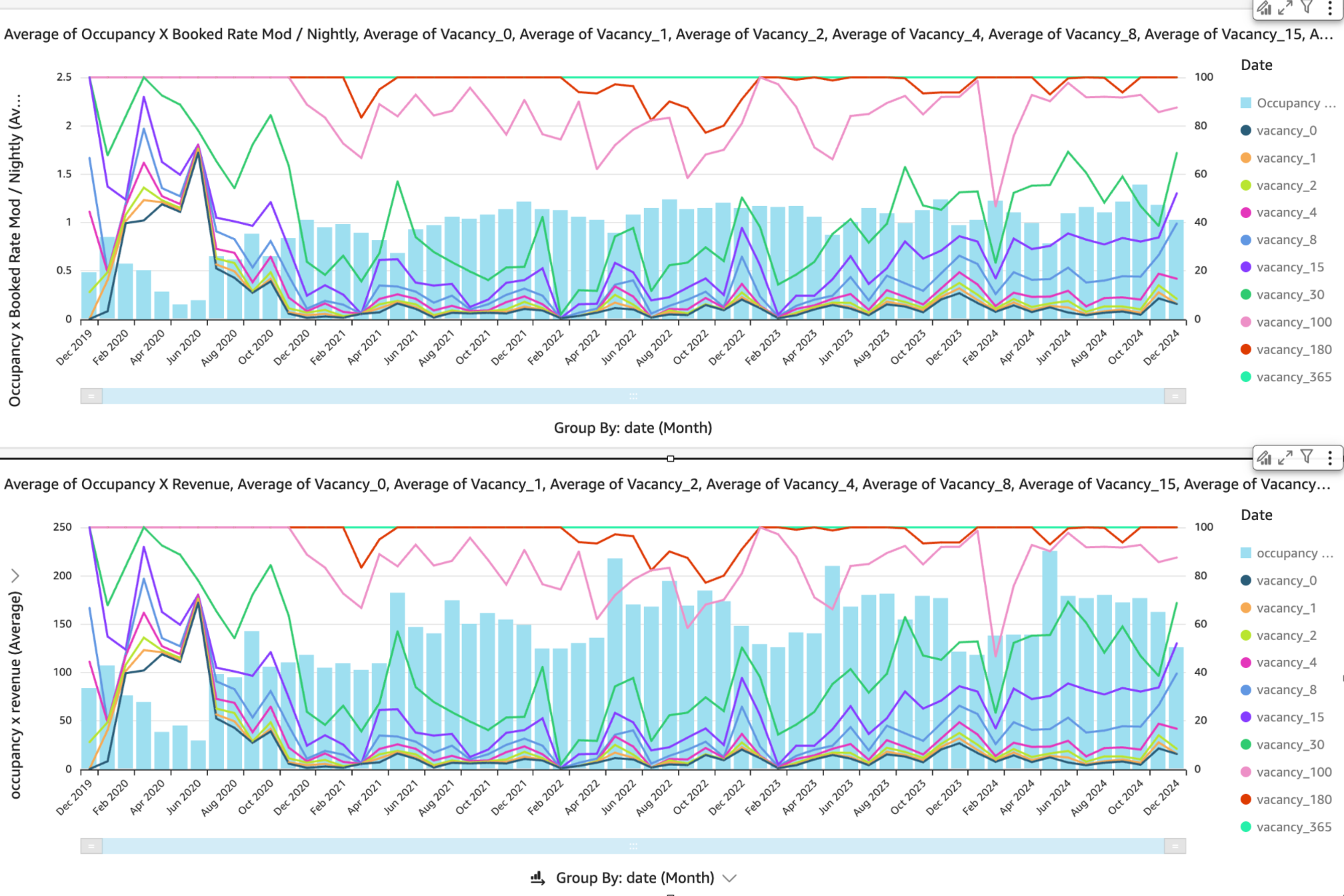Thursday, November 23, 2023
Introducing Expected Occupancy Curves: Smarter Dynamic Adjustments from GPTPricing


Introducing Expected Occupancy Curves: Smarter Dynamic Adjustments from GPTPricing
Even the best simulations and market data can sometimes stray from real-world conditions. At GPTPricing, we understand that dynamic pricing needs to stay firmly rooted in reality. That’s why we’re excited to launch Expected Occupancy Curves, a feature designed to optimize pricing in real time by continuously comparing expected and actual occupancy rates.
This powerful tool eliminates hours of manual adjustments for revenue managers, acting as an automated safeguard that ensures your property achieves its maximum revenue potential—no matter how the market shifts.
What Are Expected Occupancy Curves?
Expected Occupancy Curves are projections of optimal occupancy rates based on market data, historical trends, and real-time booking activity. These curves act as a benchmark, providing a dynamic target for your property’s performance.
Even for single-unit properties, the system works seamlessly by leveraging rolling occupancy data within a minimum sample size. As actual occupancy deviates from the expected curve, GPTPricing automatically adjusts rates to bring your property’s performance back in line.
How It Works
The Expected Occupancy Curve serves as a “magnet,” pulling actual occupancy closer to the projected target. Here’s how it functions:
• Price Increases for Higher-than-Expected Occupancy: If bookings surpass the expected curve, prices automatically rise to capitalize on demand and preserve availability for high-value reservations.
• Price Decreases for Higher-than-Expected Vacancy: If vacancy is higher than anticipated, prices drop dynamically to stimulate bookings and close the gap.
The result? Smarter, data-driven adjustments that reduce vacancy and optimize revenue without manual intervention.
A Built-In Event Adjuster
The Expected Occupancy Curve also acts as an instant event adjuster. Hidden or missed events that cause sudden spikes in demand—such as a festival, conference, or local celebration—are captured automatically. When the system detects a spike in occupancy for dates far out on the calendar, it immediately increases prices for still-available units. This ensures you don’t miss out on revenue opportunities from unforeseen market changes.
Why It Matters
Expected Occupancy Curves redefine how revenue managers approach pricing by addressing key challenges:
• Reduce Manual Work: No more daily tweaks or eyeballing charts. The system automatically adjusts rates, saving time and effort.
• Maximize Revenue: By dynamically responding to demand fluctuations, the feature ensures you capitalize on every opportunity.
• Stay Competitive: Hidden events and market shifts are accounted for in real time, keeping your property competitive and your pricing aligned with demand.
See the Results in Action
With Expected Occupancy Curves, GPTPricing offers revenue managers a powerful new tool for dynamic pricing. By keeping your property’s performance in sync with market realities, this feature reduces vacancy, maximizes revenue, and takes the guesswork out of pricing.
Experience the future of automated revenue management today. Expected Occupancy Curves are now live for all GPTPricing users. Learn more about how this feature can transform your pricing strategy—contact us or get started now!